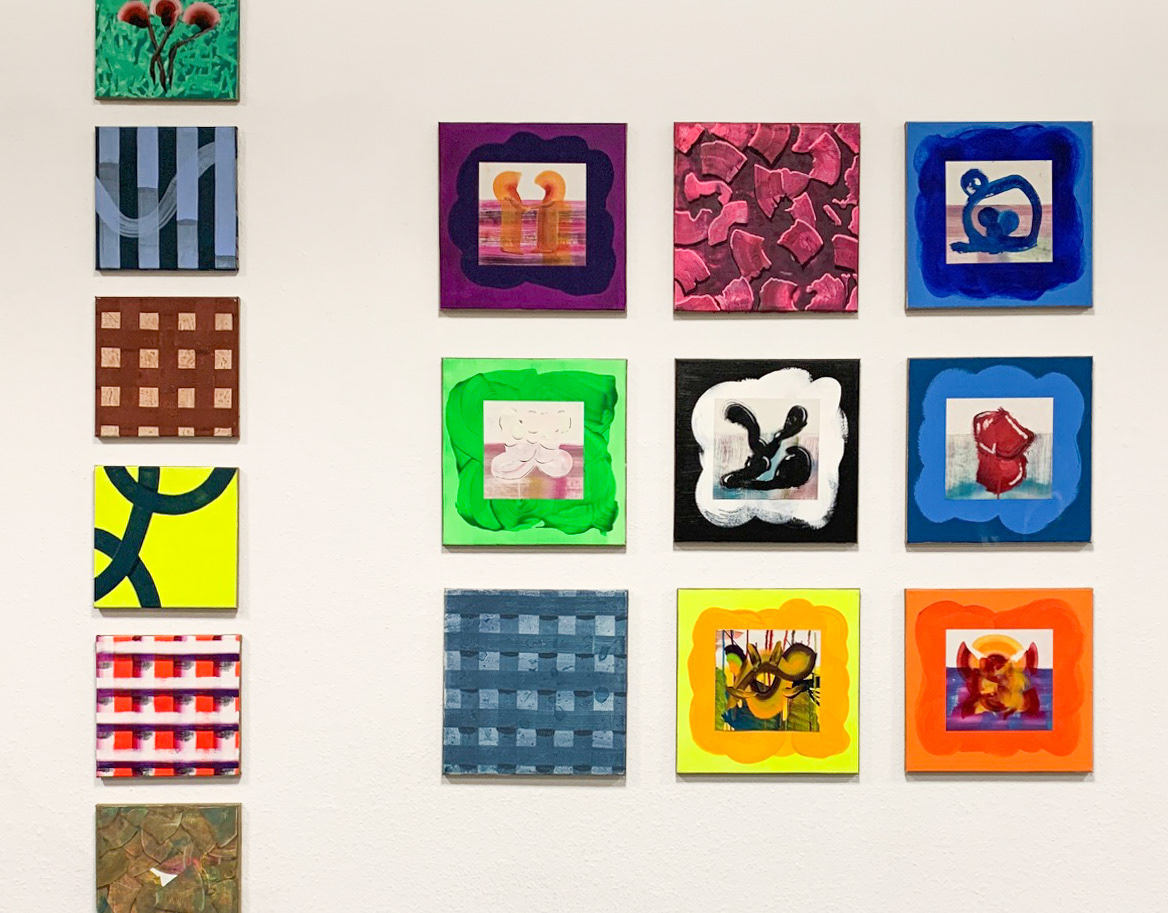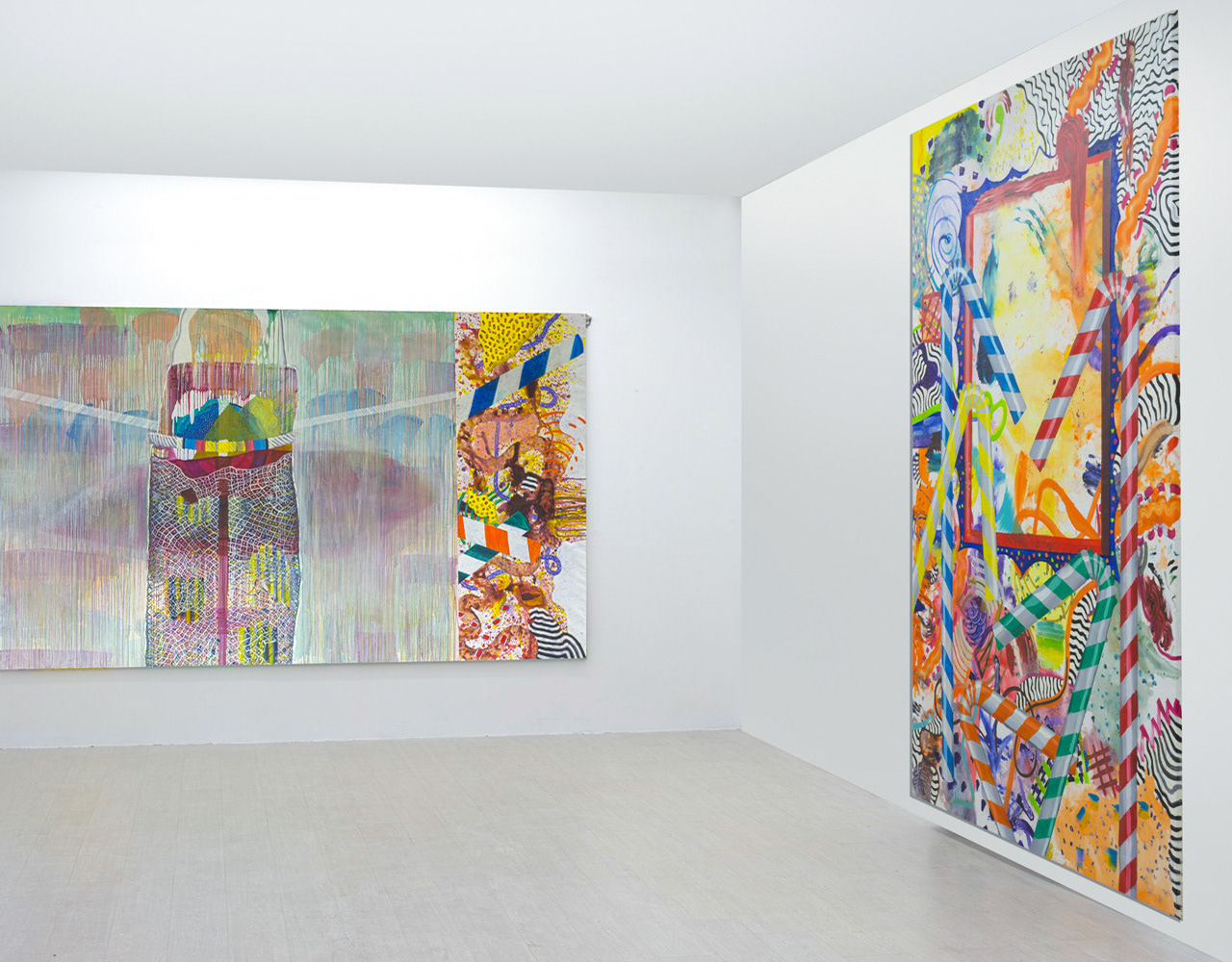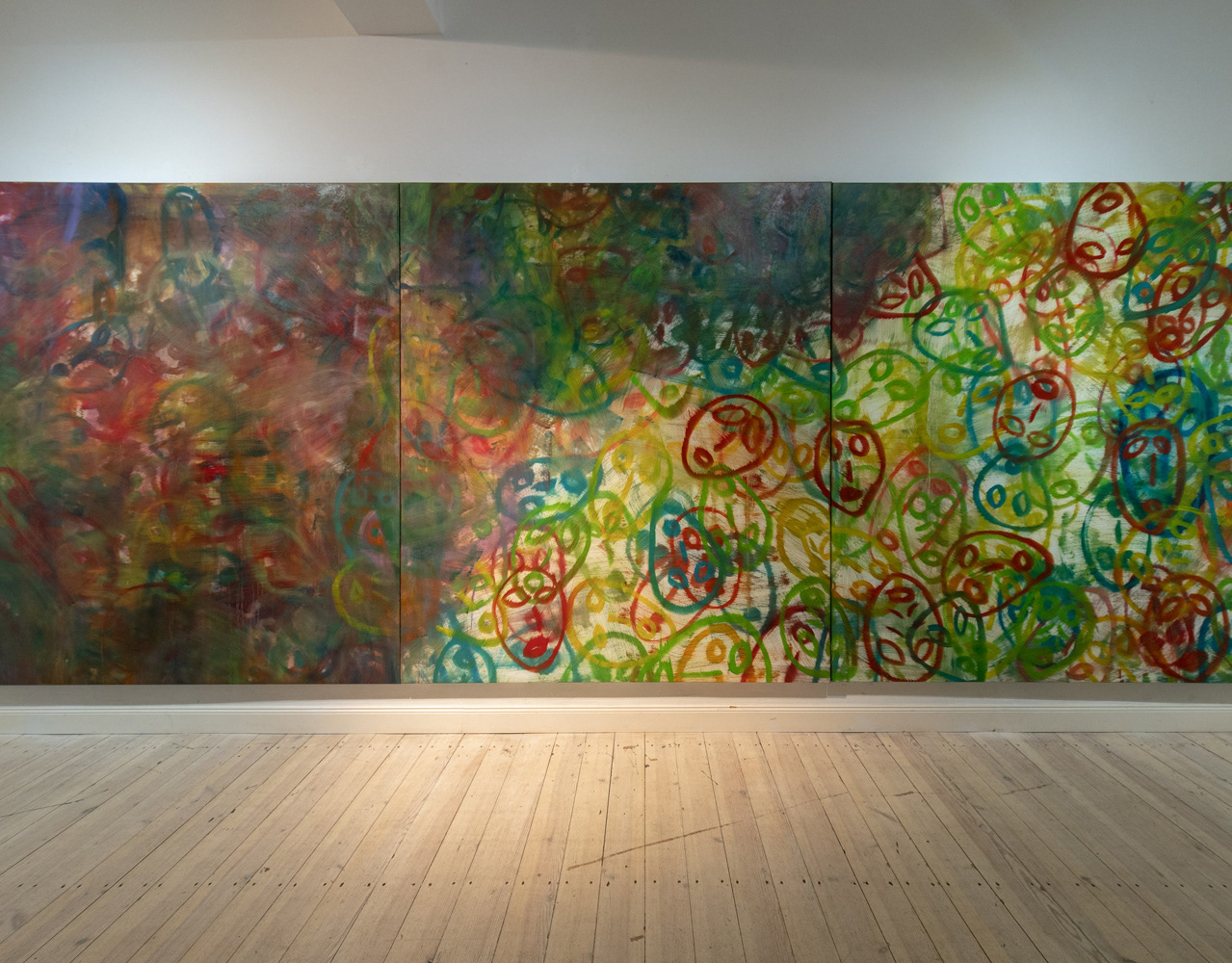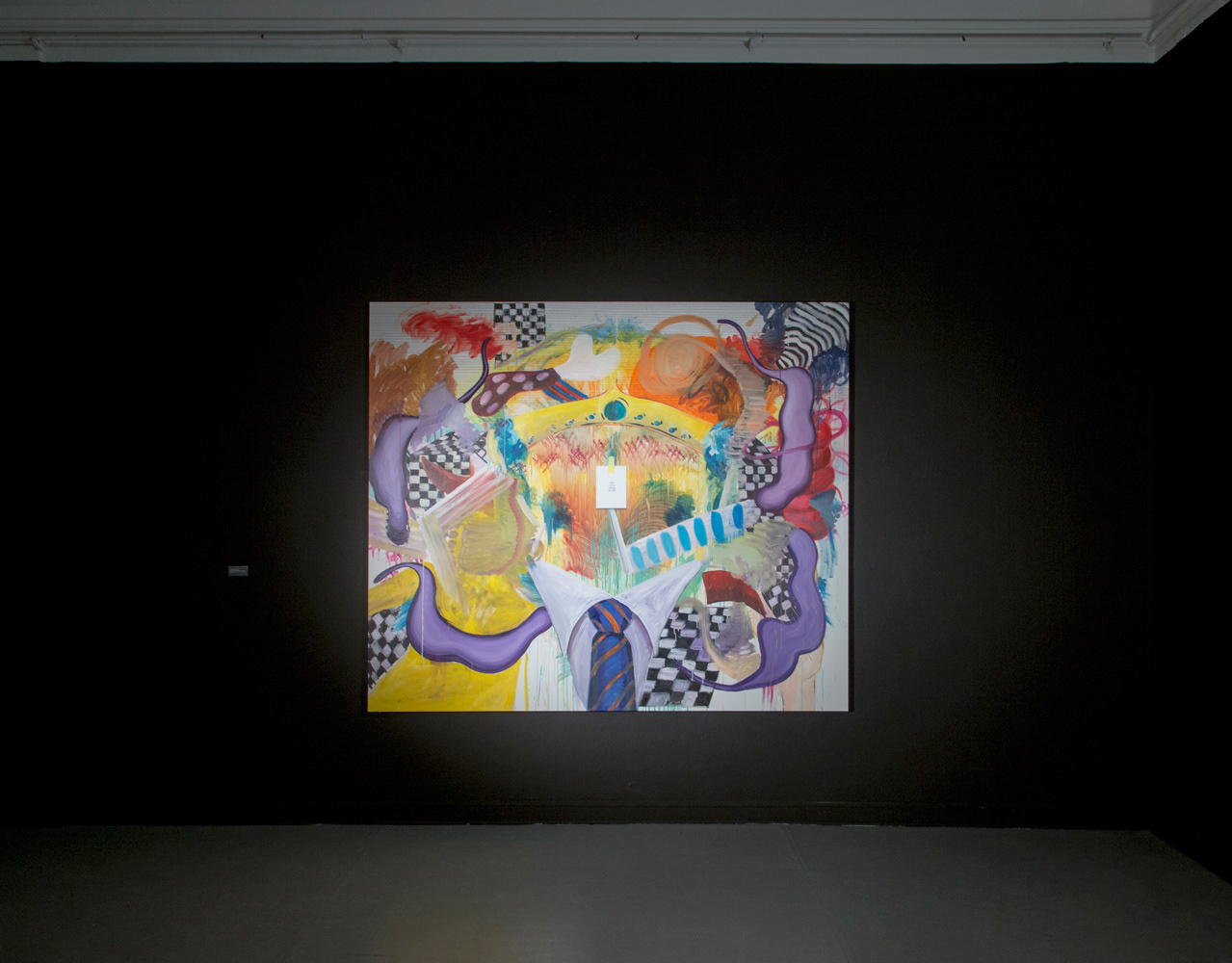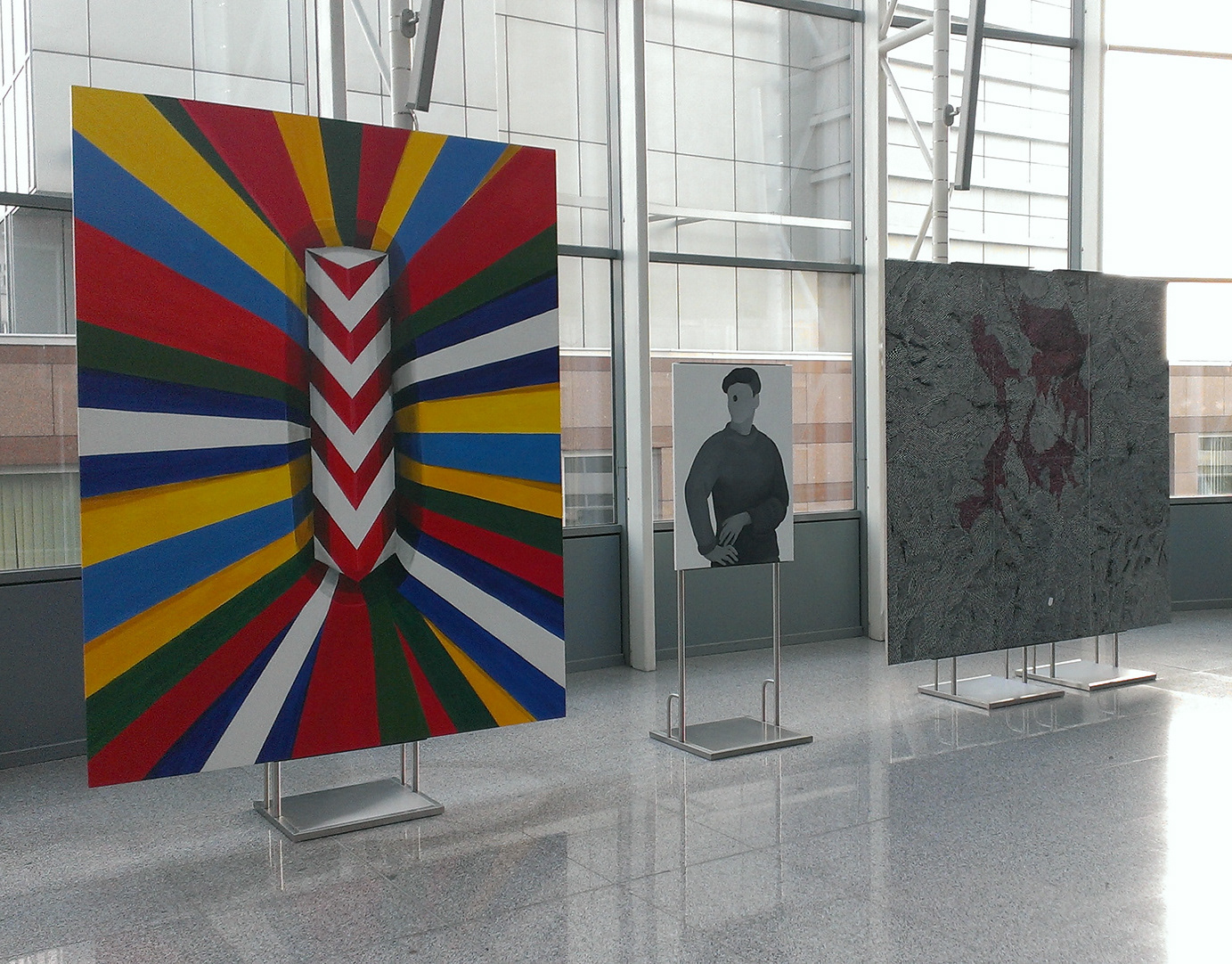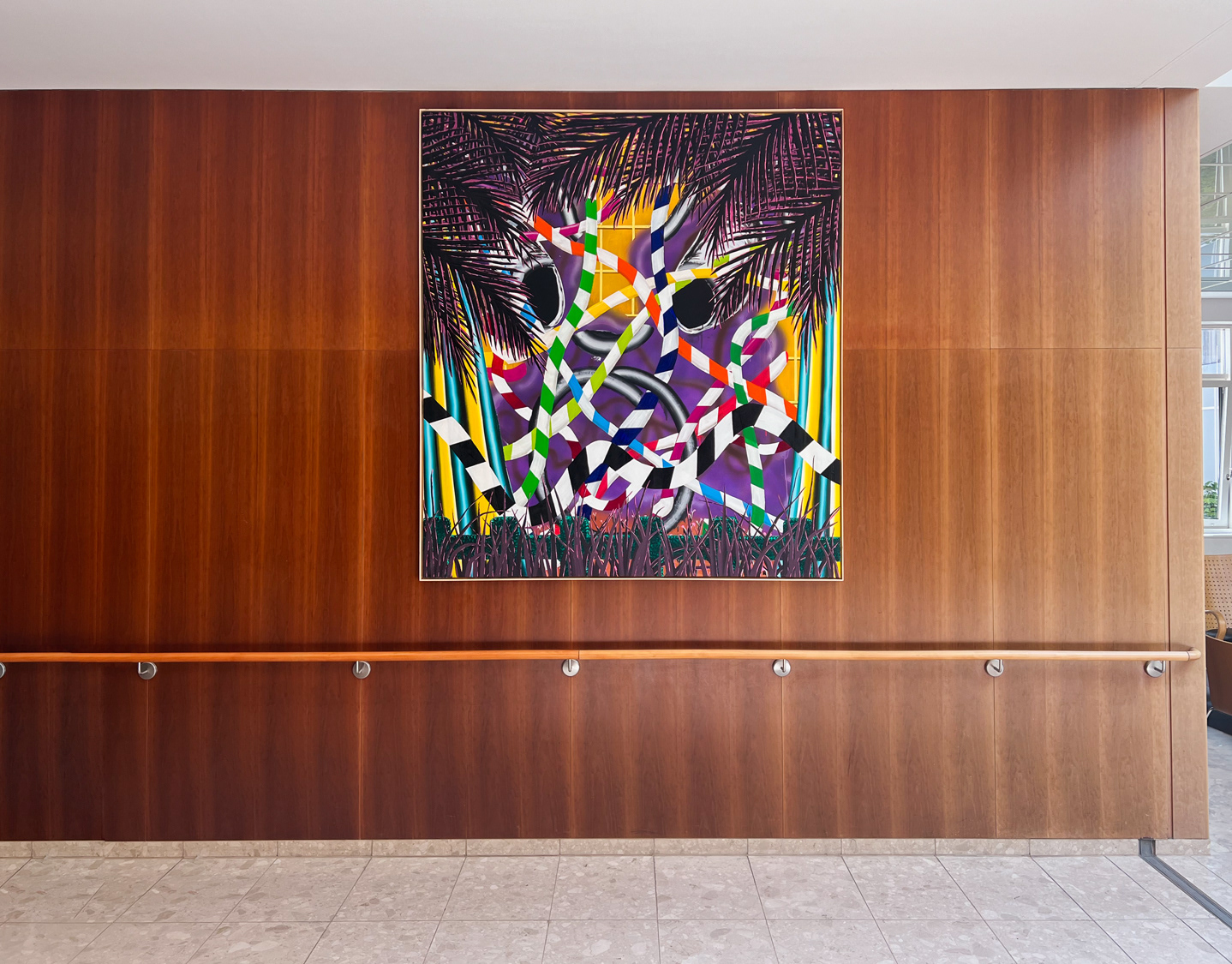A strange figure remains impassive on a stage. A curtain lifts to reveal the bizarre frame, which can only be identified as an anthropomorphic figure by the implied face. Behind it is a second curtain, which condenses the pictorial space into a narrow threshold. The curtain is - among many other symbols for the separation of different levels of being - a recurring motif in Philippe Rebosz' paintings. As an architectural element, it is ephemeral: with the gentle movement of a hand, it is eliminated and yet separates worlds. The illusion of space is found in all of Rebosz' paintings. Sometimes Philippe Rebosz's paintings appear very abstract. Still, however, they are not. The painter skillfully juggles with the most diverse painting traditions: His paintings cite classical abstraction and concrete painting, minimalist traditions, American color field painting and pop art. Airbrush technique and informal blobs meet figurative elements, hard edges meet filigree color gradients, thinly glazed color layers meet impasto applied color surfaces. With subtle humor, Rebosz combines these supposed antagonisms into an individual pictorial cosmos. Color gradients, stains and splashes live in the underground and tell of a mysterious and often explosive undercurrent. They keep the process of making the picture and its growth explicitly present. In front of it, on the surface of the painting, these representatives of its own history of creation are superimposed by abstract, large-scale pictorial elements, thus formally calming the surface. These layers of painting oscillate between the opposite poles of presentation and withdrawal: an observation that applies equally to the content of many the artist‘s works. Philippe Rebosz opens curtains, presents stages or reflective surfaces, and puts his polymorphous protagonists in the spotlight. At the same time secrets are kept here on all levels. Despite their visual seductiveness, the attractiveness in motif and color, Philippe Rebosz's works are far away from the purely decorative, from mere stage spectacle. Everything that seems spontaneous, direct and playful turns out to be planned, controlled and cerebral at the same time. Everything that presents itself as tongue-in-cheek is at the same time very serious. Everything that seems to be a product of chance is at the same time carefully and accurately composed.
Maximilian Rauschenbach
Installation view "GOLDEN SLUDGE", Donnerstag Gallery, Berlin, Germany, 2021
Installation view "GOLDEN SLUDGE", Donnerstag Gallery, Berlin, Germany, 2021
Installation view "GOLDEN SLUDGE", Donnerstag Gallery, Berlin, Germany, 2021
Installation view "GOLDEN SLUDGE", Donnerstag Gallery, Berlin, Germany, 2021
Installation view "GOLDEN SLUDGE", Donnerstag Gallery, Berlin, Germany, 2021
Installation view "GOLDEN SLUDGE", Donnerstag Gallery, Berlin, Germany, 2021
